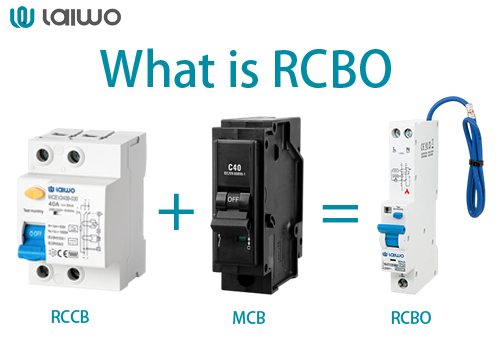Next: RCBO 6A–40A: B2B Use for Residential & Industrial Circuit Protection

RCBOs Decoded: How They Protect People and Property
Why RCBOs Matter for EV Charging Consumer Units
Residential and Industrial Applications Beyond EV
Residual Current Breakers with Overcurrent (RCBOs) have become the backbone of electrical safety in distribution boards. These devices integrate three critical protective functions: residual current detection (for electrocution prevention), overcurrent protection (against circuit overloads), and short-circuit interruption (against fault currents). In an era where electrical loads are surging due to EVs, smart appliances, and industrial automation, RCBOs provide the failsafe layer that prevents catastrophic failures.
Learn More:
RCBO Market: Size, Trends, Growth Drivers & Forecast (2022-2033)
RCBO 6A–40A: B2B Use for Residential & Industrial Circuit Protection

RCBOs combine the capabilities of miniature circuit breakers (MCBs) and residual current devices (RCDs) into a single unit:
Residual Current Protection: Detects imbalances as low as 6mA–30mA between live and neutral wires—indicating leakage current through a person or fault path—and cuts power within milliseconds.
Overcurrent/Short-Circuit Protection: Responds to overloads (e.g., 1.13–1.45x rated current) and short circuits (up to 10kA) using thermal-magnetic trip mechanisms.
| Protection Type | Trigger Threshold | Response Time | Standard Reference |
|---|---|---|---|
| Residual Current (AC) | 30mA | ≤0.1 seconds | CB/SEMKO/UKCA by EN61009-1 |
| Overload | 1.45x In | <1 hour | CB/SEMKO/UKCA by EN61009-1 |
| Short Circuit | 3kA–10kA | ≤0.01 seconds | CB/SEMKO/UKCA by EN61009-1 |
EV charging introduces unique risks: DC leakage currents from converters, prolonged high-current draws, and exposure to moisture. RCBOs tailored for EV applications detect pulsating DC faults as low as 6mA—critical for preventing battery-related fires
Traditional setups use separate RCDs + MCBs, consuming 2–3 modules in a distribution board. Modern EV-ready RCBOs like Laiwo Electric WRCS Type A/AC Mini RCBO integrate protection in a 36mm width (half the space) while reducing costs by 40% vs. discrete solutions
Real-World Application: In Hong Kong’s Tai Po Industrial Village, EV charger installations use RCBOs in weatherproof enclosures to manage 6mm² three-phase cables and 11kW loads. The entire safety system—including RCBOs, RCCBs, and MCBs—was deployed in 1 day.
Wet Areas: Kitchens/bathrooms use 30mA RCBOs for sockets.
Rural PEN Fault Mitigation: In TN-C-S systems, RCBOs trigger at PEN voltages >12V to prevent electrification of metal enclosures.
High-Breaking Capacity: Units like Laiwo’s Type A/AC RCBO series offer 6kA interruption for manufacturing plants.
Mechanical Endurance: Tested for 2,000+ operation cycles under extreme temperatures (-5°C to +40°C).
Sensitivity: 30mA for general circuits; 10mA for high-risk zones.
Breaking Capacity: 6kA minimum for commercial/industrial boards 7.
Pole Configuration: 1P+N (residential), 2P/3P (industrial/EV).
Compliance: Ensure IEC 61009-1 and regional certifications (e.g., CCC, CE).
Q1: Do EV chargers need bidirectional RCBO?
A1: Yes! Traditional RCBOs only protect against faults in one direction (from the grid to the load), while bi-directional RCBOs can detect faults in both directions, ensuring safety when electricity flows back into the grid or to other loads.
Q2: Why is RCBO important?
A2: Residual current operated circuit-breakers with integral overcurrent protection for household and similar uses, or RCBOs, are intended to protect people against earth fault current under the protective measure Automatic Disconnection of Supply (ADS) as well as additional protection.
From preventing rural electrocutions to enabling rapid EV infrastructure rollout, RCBOs are indispensable in modern distribution boards. As electrical loads grow, specifying the right RCBO—whether for a residential garage DB, industrial panel, or DC-fast-charging unit—will remain critical for compliance and human safety.
Learn More:
Distribution Boards: A Comprehensive Guide for Professionals and Consumers
INQUIRY NOW